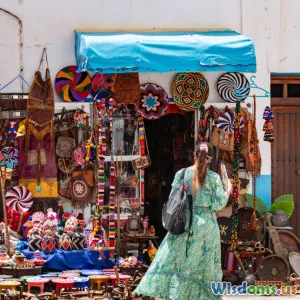
Can Economic Development Survive Without Cultural Preservation
7 min read Exploring the critical role of cultural preservation in sustaining long-term economic development worldwide. (0 Reviews)
Can Economic Development Survive Without Cultural Preservation?
Introduction: The Intersection of Growth and Identity
Economic development has traditionally been measured by metrics like GDP growth, employment rates, and infrastructure expansion. However, the increasing recognition of intangible assets has sparked an urgent question: Can economic development truly survive without cultural preservation?
Culture is often viewed as separate from economic progress, presumed irrelevant to the mechanics of growth. Yet, economic booms disconnected from cultural roots have repeatedly demonstrated fragility, social unrest, and environmental degradation. This article explores why culture is not just a backdrop but a vital component of sustainable development. Through careful analysis and real-world examples, we’ll understand how preserving culture is integral to flourishing economies.
The Foundation of Cultural Preservation
At its core, cultural preservation involves safeguarding the practices, traditions, languages, arts, and historical narratives that define a community’s identity. UNESCO defines it as maintaining cultural heritage to foster social cohesion and continuity. But beyond sentimental value, culture harbors essential economic functions:
-
Social Capital: Strong cultural ties form trust networks vital for cooperative economic activity.
-
Innovation Catalyst: Traditional knowledge and crafts inspire innovative industries, from tourism to creative economies.
-
Distinctiveness: Unique cultural markers differentiate products and destinations, boosting economic competitiveness.
Countries such as Japan leverage centuries-old craftsmanship and cultural festivals to build thriving export and tourism sectors, proving the richness of cultural heritage is an economic asset.
When Economic Development Ignores Culture: Risks and Consequences
Loss of Identity and Social Fragmentation
A stark example is seen in communities displaced by rapid urbanization or large-scale resource extraction with little regard for local cultural contexts. The Amazon rainforest indigenous groups, for instance, confront economic programs threatening their way of life, resulting in social displacement and loss of identity.
Such detachment leads to social unrest and lost productivity—effects that economic analyses often ignore but profoundly impact development sustainability.
Environmental and Economic Decline
Cultural practices frequently embody sustainable resource management techniques refined over generations. Disregard for such customs can result in environmental degradation, undermining the natural capital essential for economic longevity. For example, the integrated rice-fish farming systems in Southeast Asia exemplify traditional ecological knowledge fostering resilient economies through sustainable agriculture.
Missed Tourism and Creative Economy Opportunities
Cultural heritage attractions generate over $1.2 trillion annually in global tourism (World Tourism Organization). Ignoring this can lead to the erosion of potential revenue streams. Cities like Kyoto thrive economically by promoting cultural preservation alongside modernization, attracting millions yearly.
Synergies Between Cultural Preservation and Economic Development
Cultural Industries Driving Growth
The creative industries—including music, literature, art, and crafts—contribute an estimated 3% of global GDP. In South Korea, strategic cultural policies have stimulated the global 'K-pop' phenomenon, revitalizing its economy and cultural influence.
Empowering Local Economies
Cultural preservation often empowers marginalized communities. For example, Peru’s weaving cooperatives maintain traditional practices while enabling economic independence and promoting gender equity.
Fostering Innovation Through Ancestral Knowledge
Integrating indigenous knowledge into modern science has generated breakthroughs in pharmaceuticals, agriculture, and climate adaptation. The use of neem tree extracts in eco-friendly pesticides exemplifies how cultural practices influence profitable new technologies.
Frameworks for Integrating Cultural Preservation into Economic Policies
Countries and organizations worldwide are pioneering models that bridge economic planning with cultural conservation:
-
UNESCO’s Convention for the Safeguarding of the Intangible Cultural Heritage encourages member states to integrate culture into sustainable development agendas.
-
Community-Based Tourism (CBT) empowers locals to manage tourism by preserving cultural integrity while generating income.
-
Cultural Impact Assessments (CIA) are becoming tools in project planning to weigh economic ventures against cultural costs.
For instance, Botswana’s tourism strategy emphasizes the preservation of San peoples’ heritage, providing both economic benefits and cultural survival.
Balancing Modernity and Tradition: Challenges and Opportunities
Transitioning to a development model that respects culture faces challenges:
-
Commercialization Risks: Over-exploitation of cultural motifs can dilute authenticity.
-
Policy Conflicts: Rapid industrialization agendas sometimes overlook heritage considerations.
-
Resource Limitations: Preserving culture demands financial and institutional commitment.
However, successes include the revitalization of Aboriginal arts in Australia, which promotes indigenous culture while fostering entrepreneurship.
Technological advances also offer opportunities to digitize and disseminate cultural knowledge, expanding economic potentials without physical displacement.
Conclusion: Culture as a Pillar of Sustainable Economic Development
Economic development detached from cultural preservation is like a tree without roots—lacking stability and nourishment. As seen through global examples, culture provides unique identities that fuel economic diversification, social cohesion, and innovation.
Policymakers, businesses, and communities must recognize cultural preservation as an essential strategy for sustainable development, creating wealth that respects heritage and ensures longevity.
By embracing cultural heritage, economies worldwide can build resilience, inclusivity, and creativity necessary for the complex future ahead.
References:
- UNESCO (2021). Convention for the Safeguarding of Intangible Cultural Heritage.
- World Tourism Organization. (2022). Global Report on Cultural Tourism.
- Lester, F., & Barrios, J. (2020). Indigenous Knowledge and Sustainable Development.
- OECD. (2019). The Economic Impact of Culture.
Empower culture to empower development—because economic survival depends on it.
Rate the Post
User Reviews
Popular Posts



















